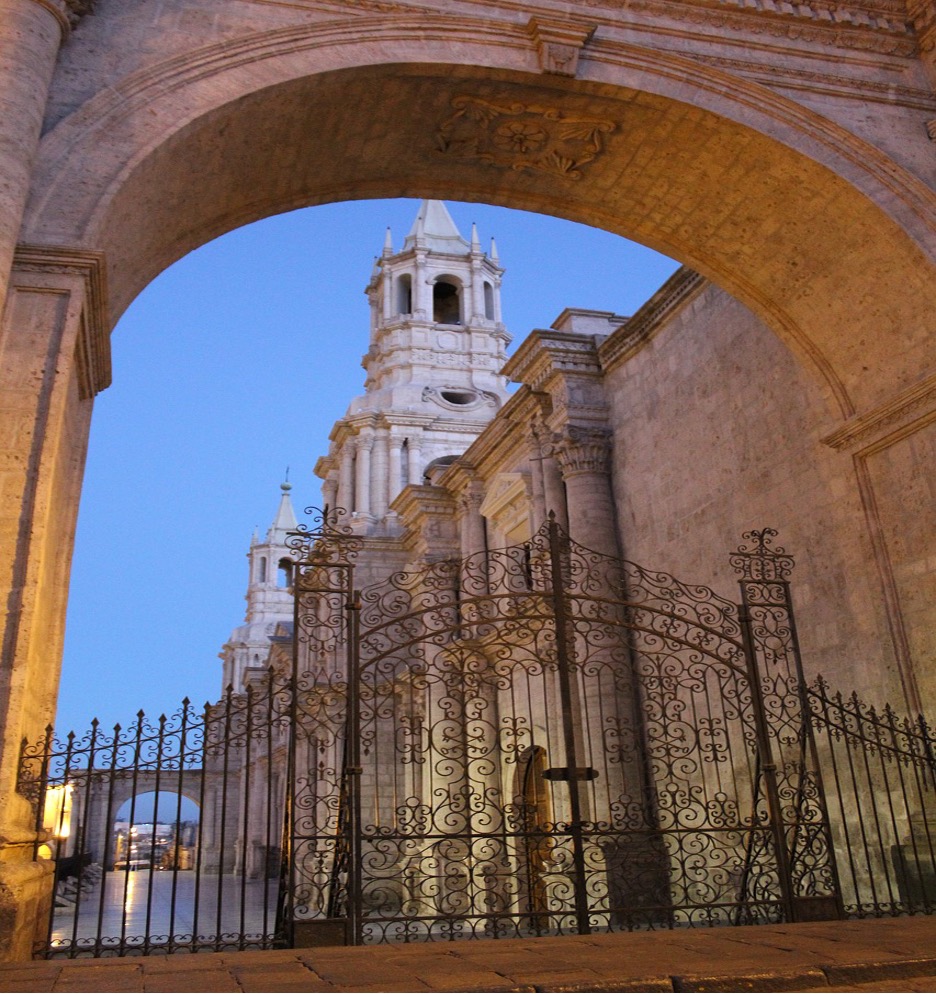
Deciding how to spend one day in Arequipa is like choosing a single gem from a mound of diamonds. The city, known as the legal capital of Peru, is located in the Chili River Valley of the Andes Mountains, flanked by four volcanoes. It was originally a nomadic haven, which evolved into a collection of villages inhabited by the Yarabaya, Cabana, and Collagua tribes before they were conquered by the Inca.
Arequipa was discovered by the Spanish in the early 16th century and renamed Beautiful Villa of Our Lady of the Assumption of Arequipa (Villa de la Asunción de Nuestra Señora del Valle Hermoso de Arequipa). It became a thriving metropolis, loyal to the Spanish Crown, but also known to assert its distinct identity throughout its history.
It’s both indigenous and Spanish, Incan and tribal–always Peruvian–and filled with the modern trappings of an industrial center, as well as the colonial remnants of its Catholic roots. To most, Arequipa is a place for tourists to travel back in time and experience the intersection of cultures. There’s food, festivals, nightlife, ancient relics, and centuries-old architecture, all combined to create a thrilling tapestry waiting to be unraveled.
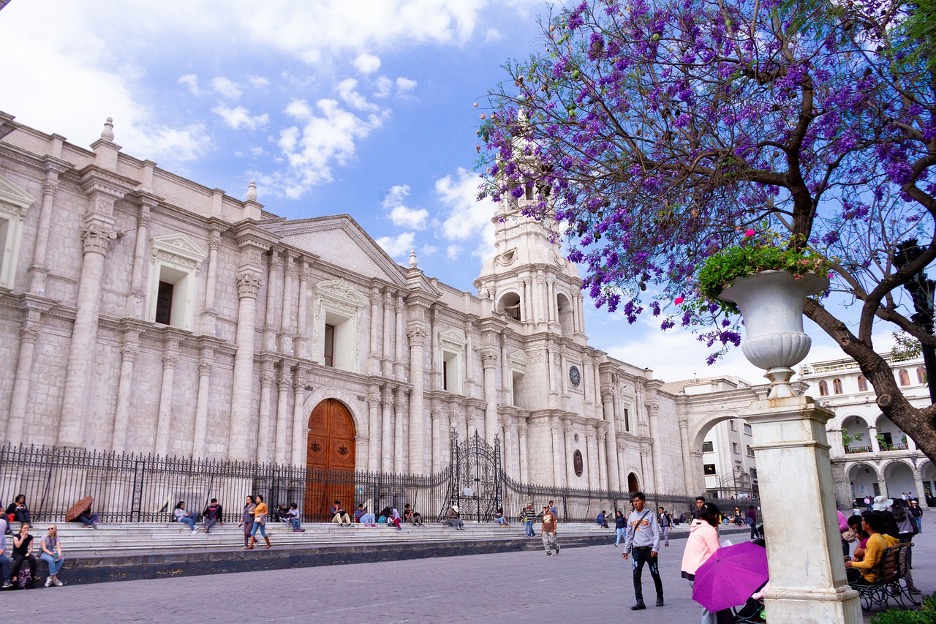
Planning Arequipa Day Trips
Travelers to Arequipa will be happy to know that the city enjoys a year-round temperate climate. It’s never too cold or too hot to be outside safely. The temperature is rarely uncomfortable. From March until January, there is little to no rain, and the region does not experience the dramatic storms native to other parts of Peru. It is balmy, but other than that, the weather is perfect, and unlike many areas of Latin America, Arequipa is known for its low crime rate. It is safe to explore, so long as travelers take the same basic precautions they would take anywhere else.
Tourists can bask in the city all they want, and there is a lot to see. Arequipa is nearly 500 years old–if you ignore the years of tribal and Incan rule, which is why the main sites are centered around art, architecture, and tradition. All of the major demographic groups have found ways to express themselves and educate the public.
There are Spanish basilicas, sprawling monasteries, art galleries, and native exhibits. As is the case throughout most of Peru, all of these cultures are alive and thriving. When planning Arequipa day trips, most tourists simply pick from these sites based on their personal tastes and interests.
Most of the festivals are based on the Catholic calendar, which is of course melded together with native traditions. There are giant processions, the requisite Carnival in February, as well as native dances and feasts. These events will have their own amenities, including food, but accommodations might be sparse. Be sure to plan ahead.
It would be impossible to spend one day in Arequipa without sampling the food. Of course, many of the major chains are present, but nobody is going to travel thousands of miles for a basic cheeseburger and fries. Peruvian fare is rich with flavor and spices. Sometimes it is hot, but not to an extreme, and not every dish incorporates chilies. There are choices for everyone, whether you’re looking for gourmet fusion or a quick bite from a food stand. Half of the fun is choosing what to eat.
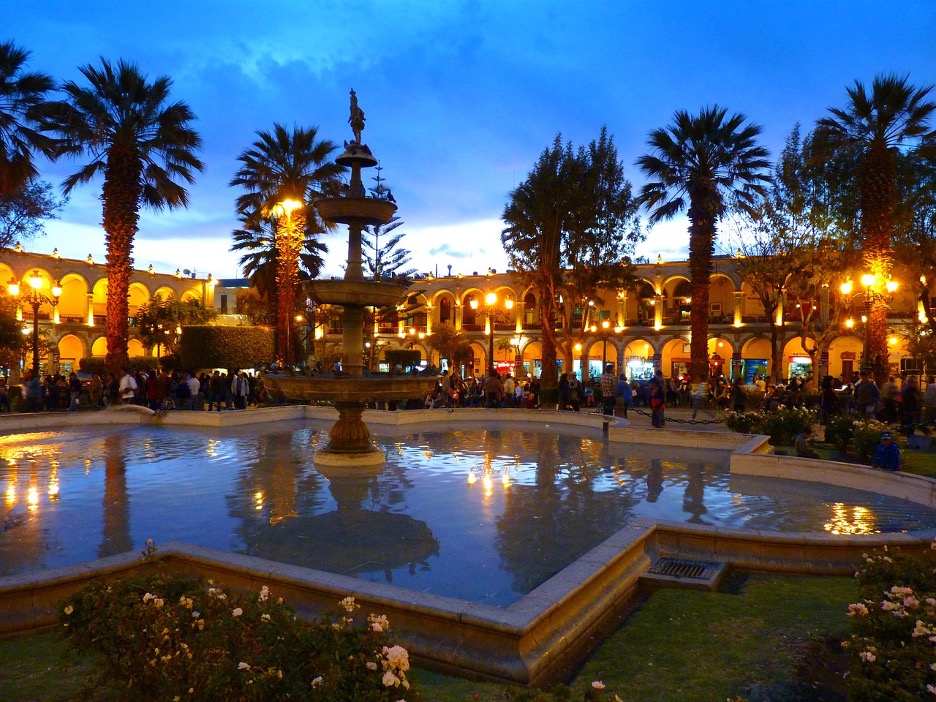
Places to Visit in Arequipa
It is true, one day in Arequipa is not enough to do the city justice; a year would leave most tourists wanting. But you can make the most of that day, learn, explore, and see things you never thought you’d see.
When reading through this list of sites, keep in mind that Peruvians primarily speak Spanish. To them, a monastery is a monestario, a market is a mercado, and a museum is a museo. The names of each site will reflect that. But if Spanish isn’t your thing, and you’re having trouble finding your way, you can get far if you know how to soften your consonants, roll your ‘r’s and make use of basic Spanish vowels. A good accent really does help.
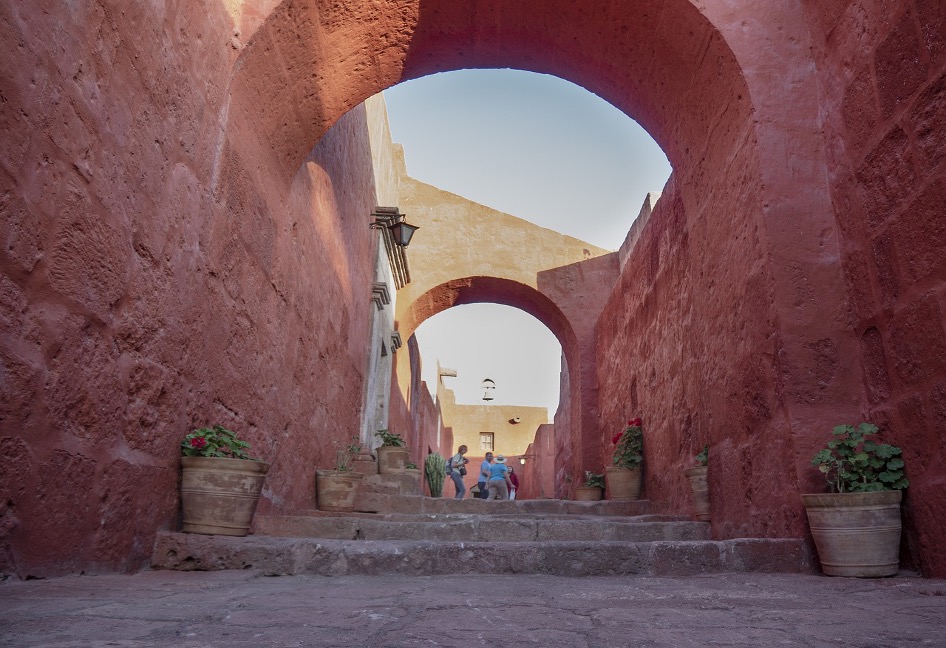
Monastery of Santa Catalina de Siena
Arequipa is often referred to as ‘The White City’ because of its use of sillar, a pale, semi-porous, volcanic rock. The Monastery of Santa Catalina de Siena is a white city within a white city, built from the same material. It’s 20,000 square meters of winding lanes and arched passageways filled with ancient Catholic art and architecture. There’s a church, a museum, a plaza, and a gallery, as well as a children’s school. Visiting tourists often make use of the multi-lingual guides, which are available upon request.
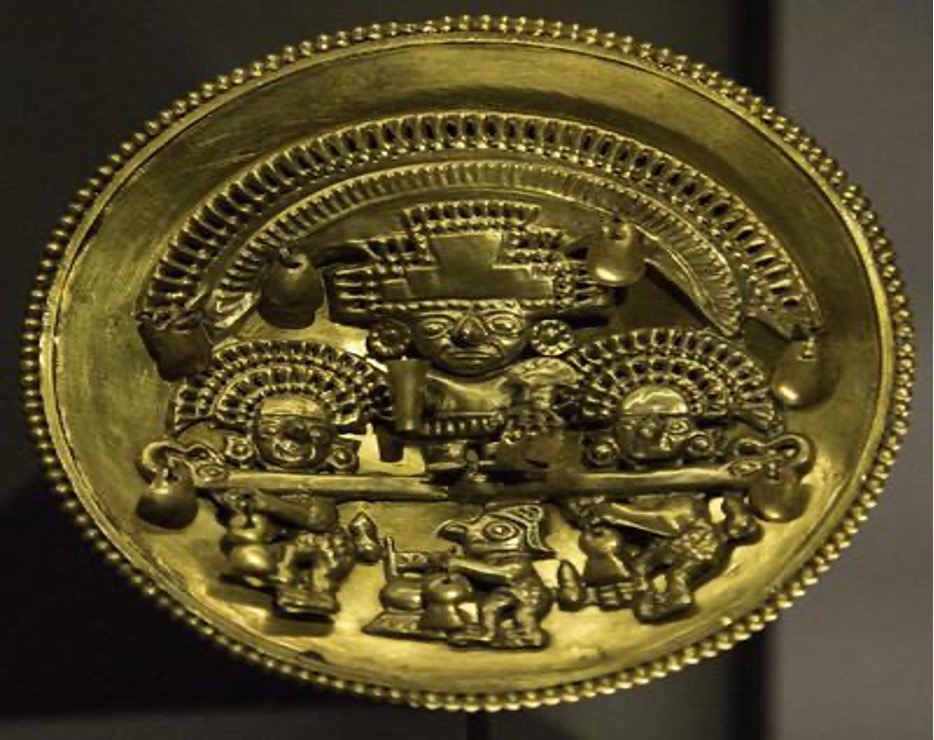
Andean Shrines Museum
One of many museums in Arequipa, the Andean Shrines Museum, also known as the Andean Sanctuaries Museum, was administered by the Catholic University of Santa Maria. While there, visitors will have a chance to watch footage chronicling the Incans before perusing the exhibits, the most famous of which is the Juanita Mummy, the extraordinarily well-preserved remains of a 15th-century child sacrifice victim. She was found in the snow-topped peaks of Ampato in 1995, along with textiles, utensils, and other tools used during the ritual.
The museum also houses indigenous art, as well as religious statues crafted from silver, copper, and gold. It’s not an all-day affair. Visitors can spend a few hours moving from room to room before exploring other sites around the city.
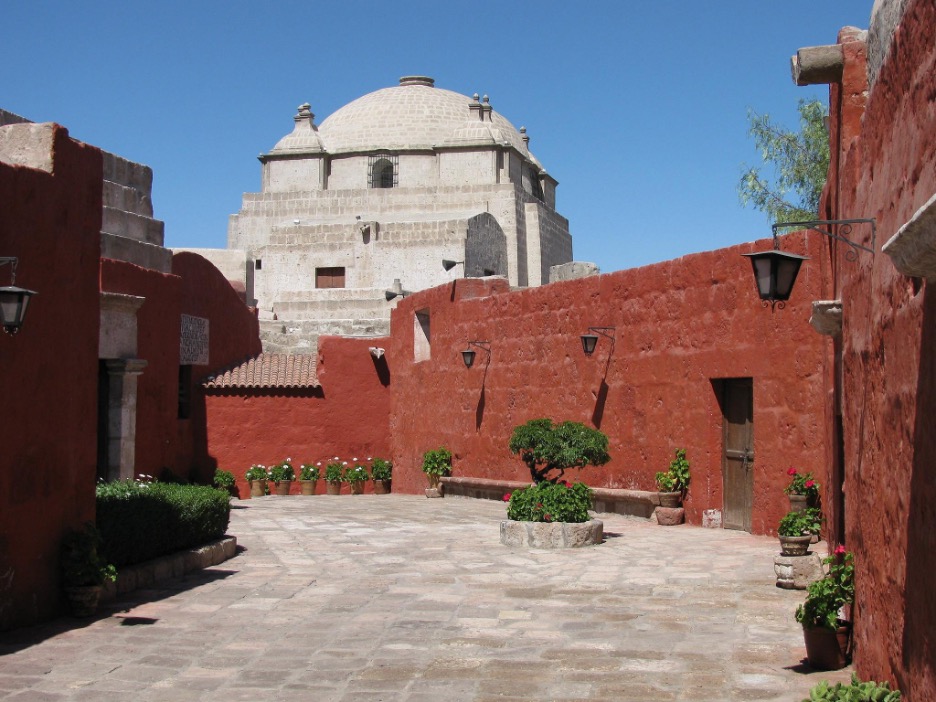
Courtesy of Peter Burka via Flickr
Santa Teresa Monastery and Museum of Viceregal Art
All Arequipa day trips should include a visit to the Santa Teresa Monastery and Museum of Viceregal Art. Since it was established in 1710, this monastery, which also doubles as a cloistered nunnery, has been collecting and showcasing various treasures. This includes furniture, murals, paintings, sculpture, goldsmiths, decorative art, and canvases–all from different eras. The architecture itself is a stunning display of the Andean Baroque style, including a magnificent cathedral with a silver altar. It’s one of the most extensive collections of art in Peru.
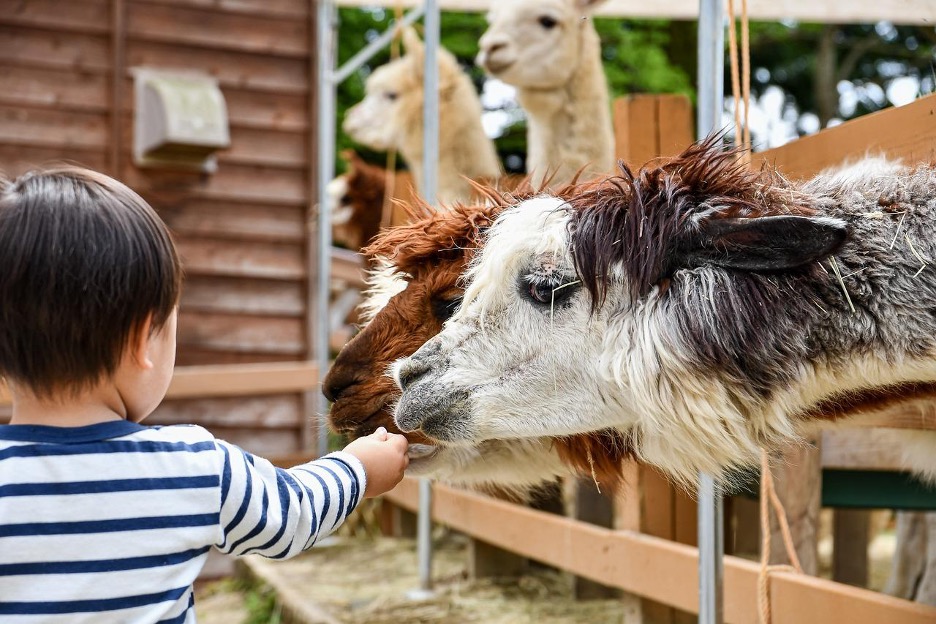
Mundo Alpaca
The alpaca, a close cousin to the llama, has been a central part of Andean life for centuries. It was domesticated, bred for its wool and its meat, and used as a pack animal. It’s become a focal point of the indigenous culture, which is why Mundo Alpaca, Spanish for Alpaca World, was created. It’s a unique destination that gives tourists a hands-on experience with the animals. They also offer a look into the characteristic art of wool weaving that has come to define the local culture and a museum where visitors can peruse various themed exhibitions. It’s a must-see for Arequipa day trips.
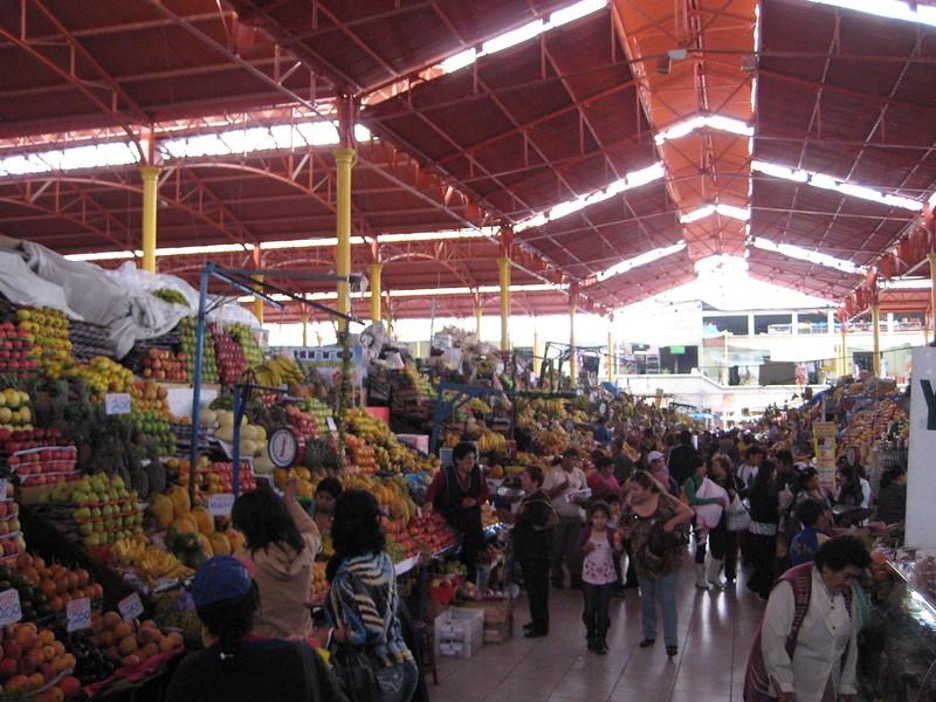
Courtesy of rrunaway via Flickr
The San Camilo Market (Mercado de San Camilo)
Most Americans never have a chance to experience a real street market. It’s a distinctly human setting, universal throughout much of the world. There are children running through darkened lanes, vendors hawking their wares, calling out to anyone who passes by. There’s a hustle and bustle, the smell of street food, palettes of produce, handmade clothes, and cheap electronics. It’s capitalism embodied, where people try their luck and sell whatever they can afford. The San Camilo Market is a 130-year-old institution keeping that timeless tradition alive, and it would be a waste to spend one day in Arequipa without making a visit.
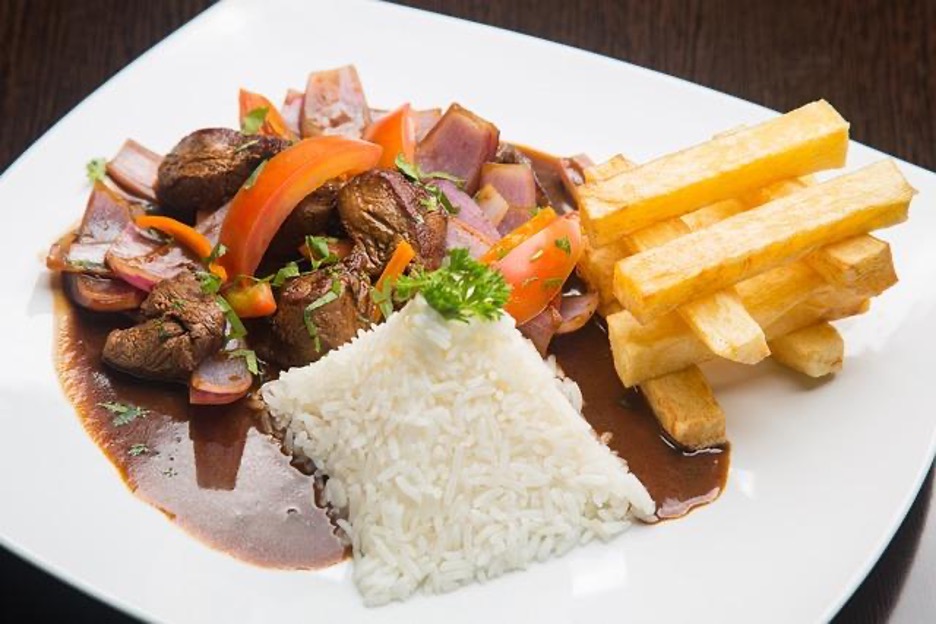
Places to Eat in Arequipa
Tourists who want to sample the local cuisine and make the most out of their Arequipa day trips should find a tiny hole-in-the-wall or an old woman selling food on a street corner. That is Peruvian food in action, reflecting how their tastes have evolved, using local ingredients and folk recipes.
You could also try one of the city’s many traditional restaurants, where they pass down and perfect time-honored dishes. The oldest restaurant in Arequipa–one of the oldest in Peru in fact–is Sol De Mayo, the Sun of May. They’ve been in business for over a century, and they’re world-renowned for following traditional recipes to the letter. They have patio dining and live music with a view of the snow-topped volcanos. Their menu includesa shrimp chowder known as chupe de camarones, Peruvian stuffed peppers, and fried calamari.
Another local favorite is Tradicion Arequipena, where the chef Dona Hermalinda conjures up traditional home cooking, serving chicharrones, pork ribs, and snack plates. Some restaurants, like Los Robles and Kao Thai, have chosen to fuse flavors from different cuisines or regions of Peru, adding a modern twist.
There are a lot of different choices. Tourists should take their time. If they only plan on spending one day in Arequipa, it’s better to plan ahead, read reviews, and find the perfect restaurant. Nothing could be worse than sitting down for a bad plate of food, especially not when there’s so much variety and flavor to be had.
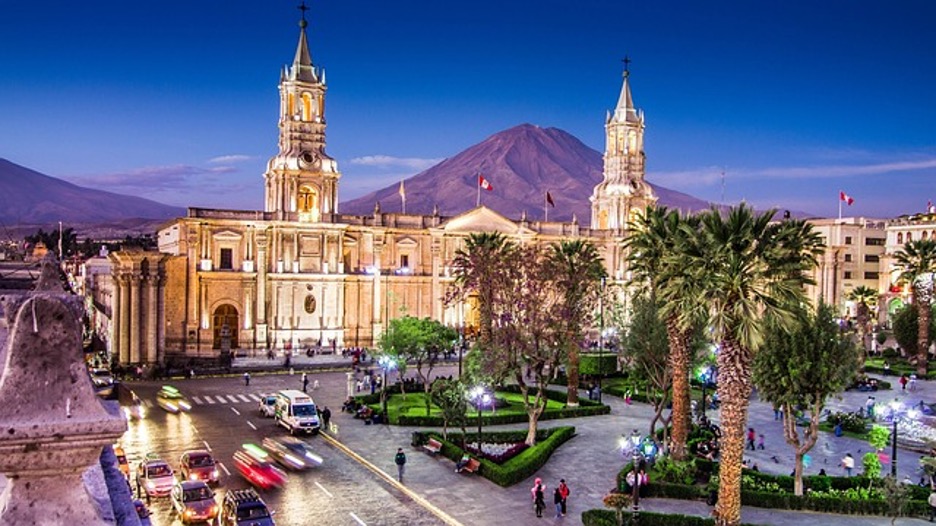
The Last Moments of Your One Day in Arequipa
After spending one day in Arequipa, there’s only one place to go, the Yanahuara district, about 2 kilometers from the city center. It’s adorned with orchards and lined with cobblestone streets. There are terraced walls with intricate carvings known as the Andenes de Yanahuara, depicting daily life. In one area, known as the Mirador de Yanahuaras, you can see the entire city below and watch the sunset while taking in the view of three volcanos, Misti, Chachani, and Pichu Pichu. It’s the full Andean experience, quiet, and awe-inspiring.
